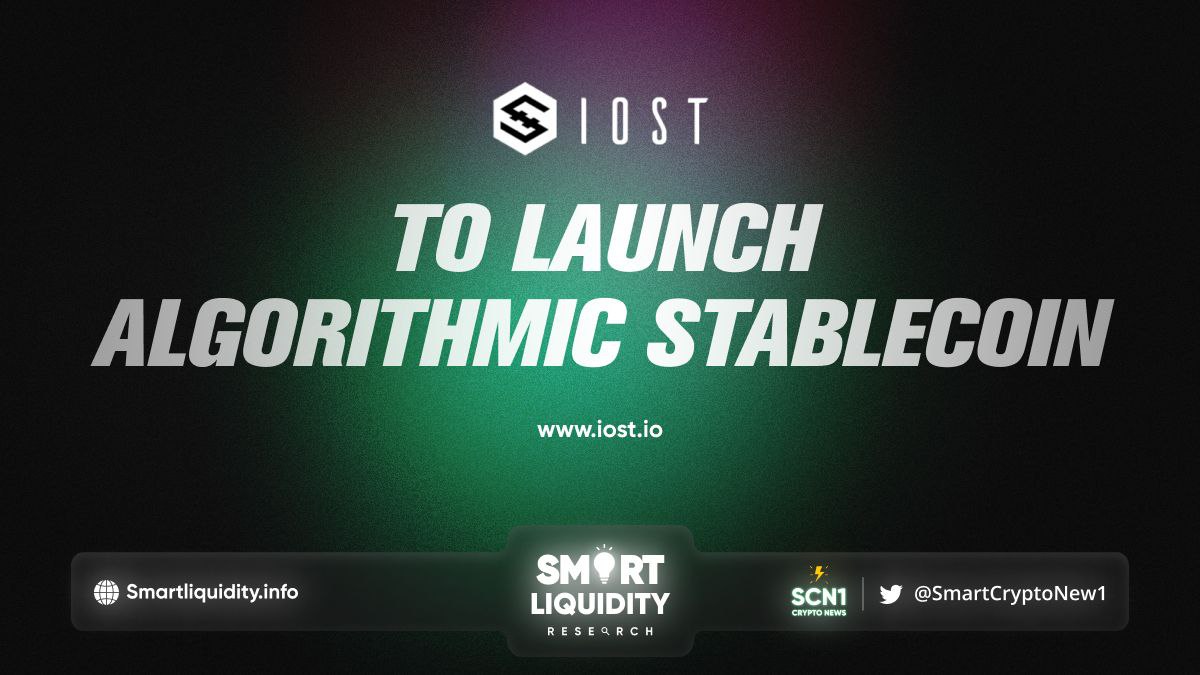IOST Decentralized Algorithmic Stablecoin


IOST will launch decentralized algorithmic stablecoin. Stablecoins play a vital role in the crypto ecosystem. Not only do they open up cryptocurrencies as a medium of exchange, but they also provide investors with a safer option to store assets during times of market volatility without switching to fiat currencies.
As an important asset class in the crypto market, stablecoins have also experienced impressive growth recently.
- The suitable scarcity via inflation and deflation;
- A two-way arbitrage design (economic exploit);
- A secondary token model with a secondary token to absorb the volatility of the stablecoin.
IOST aims to solve three core problems:
- Ensure the authenticity of oracle price feeds.
- Manage scarcity to ensure price stability and deal with deflationary costs.
- Design a short-term price arbitrage model to reduce short-term price volatility.
In addition, IOST will leverage its strong community with hundreds of thousands of users. Underlying solid technical support, and the increasingly mature multi-chain ecosystem. It lays the upcoming decentralized algorithm stablecoin a solid foundation. They believe that its stablecoin will effectively expand the real-world use cases of algorithmic stablecoins and further strengthen the IOST ecosystem.
The IOST Foundation will put in more funding and resources focusing on gaining wider attention to IOST’s multi-chain ecosystem and making IOST’s algorithmic stablecoin well-known as a higher annualized interest rate and lower-risk coin against its competitors.
Stablecoins on IOST
- First cross-chain stablecoin on IOST — The iUSD
On March 9, 2019, IOST announced the launch of its first cross-chain stablecoin iUSD. - Xigua Finance functional stablecoin — The XUSD
Xigua adopted a dual token governance model based on XG and XUSD. XG is the platform token to participate in the decentralized governance and rewards division on the platform. - Compliant stablecoin — The HUSD
The highly anticipated HUSD stablecoin IRC21 token was officially integrated into the IOST blockchain. - Japanese Yen stablecoin — The JPYA
On May 19, 2021, the Platinum Egg team — IOST Partner Node and Game Developer announced the issuance of IRC-20 JPYA (JPY Stablecoin) based on the IOST blockchain. The JPYA stablecoin is pegged 1:1 to the Japanese Yen and can be purchased with Japanese Yen, BTC, ETH, and IOST. - USD stablecoin — The USDA
On May 26, 2021, the Platinum Egg team — IOST Partner Node and Game Developer announced the issuance of IRC-20 USDA (USD Stablecoin) based on the IOST blockchain. Moreover, the USA stablecoin is pegged 1:1 to the US Dollar and can be purchased with Japanese Yen, BTC, ETH, and IOST.
Additional Reading: Stablecoins Categories
Furthermore, currently, there are three main types of stablecoins: USD-collateralized stablecoins, assets-collateralized stablecoins, and algorithmic stablecoins.
USD-collateralized stablecoins:
- USDT & USDC, but also stablecoins issued by exchanges, such as BUSD, HUSD, etc.
- Centrally managed, backed by U.S. dollars, and exchangeable at a 1:1 rate.
- Ensure pegs and high capital efficiency.
Assets-collateralized stablecoins
- MakerDAO’s DAI and others
- Collateralized by crypto-assets and rely on price oracles to maintain their peg to the US dollar
- Unlike centralized stablecoins, minting this kind of token does not require permission
- The over-collateralization mechanism makes this kind of token too capital intensive. Also, due to the highly volatile value of crypto assets, such stablecoins are vulnerable to market shocks.
Pros of the centralized stablecoins:
- The market is adapted to centralized stablecoins as a price-stable digital asset trading medium
- They have greatly improved the convenience of transactions between different tokens
- Pushed the total market cap of cryptocurrencies toward new highs, breaking trillions of USD valuation.
Cons of the centralized stablecoins:
- The vulnerability of centralized stablecoins when facing extreme situations and emergencies
- The issuance/minting rights are still in the hands of centralized institutions, which have the highest authority
- Assets can be confiscated and frozen
- The risk of “token runs”
- Lack of decentralization — trade-offs such as sovereignty and the inviolability of private assets.
Decentralized Algorithmic Stablecoins
- Expands its supply above the target price and shrinks its supply below the target price.
- Convertible to USD nor have other crypto assets as collateral as of now.
- Demand is primarily driven by market sentiment and momentum.
- Similar to native stablecoins in the crypto industry.
- There is a lot of gambling, speculation, arbitrage, and other behaviors behind algorithmic stablecoins.
ABOUT IOST
IOST is a pioneering decentralized, high-throughput, gas-efficient Proof-of-Believability-powered smart contract platform built to tackle the scalability trilemma.
RESOURCES
Medium




